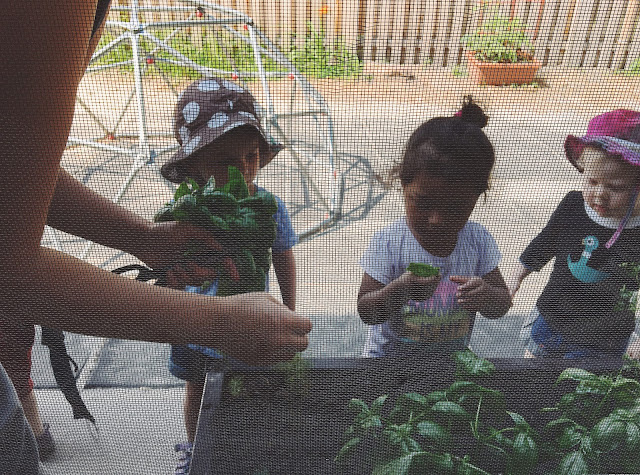Troublemakers and a Double Raspberry Pie with Maple Cream Cheese Crust
.
A few weeks ago my family and I took a long vacation to the New Hampshire beach (yes, there really is beach in New Hampshire), which means I got the chance to devour a whole book in just a few sittings. It was Troublemakers, by Carla Shalaby. I borrowed it from a smart cookie of a coworker named Emma, who subbed for me in the kitchen while I communed with the ocean. She came in one morning to help me out and get a feel for the rhythm of the job, and we ended up having an intense discussion about kids, race, politics, elementary school, the subtle to not-at-all-subtle discrimination we've witnessed in schools, and the school-to-prison pipeline, and she brought up this book she'd recently read. She offered to loan it to me and, just like she predicted, once I started reading I had a hard time putting it down.
In it, the author presents four studies of different children, all in first grade, two in one school and two in another. She talks with the children, their teachers, their friends, and their families looking for a well rounded sense of who the kids are not just at school, but in different parts of thier lives. The kids are all identified as "difficult" or challenging by their teachers, and the author set out to unpack why, and how the label affected the kids lives at school. Spoiler alert - it's not positive. I can't stop thinking about this book, and the questions it raises about how we treat kids who struggle with rules and conformity at an early age - for whatever reason - and how exclusion from classroom and school community may be more harmful than helpful as a consequence for non-compliance with rules, or non-conformity with school culture. And, how "school culture" can also be -conscious or unconcious- code for "white culture".
Two phrases from the introduction have really stuck with me since reading it, and keep coming up in my thoughts. I'll paraphrase. First, Shalaby ponders how, even in school, the default mode is to encourage folks to "get ahead" of their neighbor, instead of "struggle alongside". An excellent example? Shalaby describes in heartbreaking detail what happens when kids are asked to police each other's behavior, setting up a dynamic of not just competition for the good favor of adults, but heirarchy based on, say, figuring out how to get picked as the line leader. It turns out kids opinions of other kids are deeply influenced by the way the adults in charge treat those kids. And when those adults show disdain or worse, exclude kids from the group they belong to - their community - other kids take note, and often continue that exclusion themselves. It is disappointing but not surprising that these exclusions and shows of power often break down along racial lines in the classroom.
The second phrase? Shalaby suggests that we - and by "we" she means white folks - need to spend some time thinking about "how to thrive without stepping on anybody's neck." In a moment when the national powers that-be-seem interested only in stomping on the necks of the already marginalized, this one really keeps booming like a gong in my head.
I'm grateful to work with such a curious, big hearted, radical group of people who have committed to working on these questions together.
Now we're all back at work after a short summer In-Service, having started a new school year this week. It feels good to be feeding people, as always.
And making pie helps me relax, and think. This was a good old Sunday bake, made with care while I sorted through some things after our long trip. My mother in law was visiting and she brought us this really delicious cream cheese with a dozen Myers bagels. But we ate all the Montreal Spice bagels with butter and ended up with pretty much the whole maple cream cheese container left over with no bagels in sight. We really only eat bagels when someone brings them to us from Myers, so I had to think of another use for the stuff.
I looked up cream cheese pie crust and yep, it was a thing. There were many methods, some far more complicated than others, so I went with the simplest one. I was taught (by my first formal kitchen teacher at the Whole in The Wall, Brigitte - I can't remember her last name but I would like to thank her someday for the excellent pie crust instruction) the importance of everything - bowl, flour, fat, liquids - being very cold when you put a pie crust together, and that's about the only rule I really stick to and insist on. It does make all the difference, and I'm someone who is often in a hurry and looking for a shortcut. I'm working on that though.
I looked up cream cheese pie crust and yep, it was a thing. There were many methods, some far more complicated than others, so I went with the simplest one. I was taught (by my first formal kitchen teacher at the Whole in The Wall, Brigitte - I can't remember her last name but I would like to thank her someday for the excellent pie crust instruction) the importance of everything - bowl, flour, fat, liquids - being very cold when you put a pie crust together, and that's about the only rule I really stick to and insist on. It does make all the difference, and I'm someone who is often in a hurry and looking for a shortcut. I'm working on that though.
 |
| fresh picked |
 |
| beauties |
Raspberry Pie with Maple Cream Cheese Crust
Crust:
2 1/2 cups unbleached all purpose flour
7 Tbsp butter, very cold, cut into 1/2 inch chunks
4 Tbsp maple cream cheese. Place cream cheese in a small bowl, cover and freeze for 20 minutes before using. You could also use plain cream cheese with a tsp or 2 of real maple syrup mixed in.
1/4 cup ice water
pinch of salt
Filling:
6-7 cups red, black, or champagne raspberries - ideally a combination!
1/2 cup all purpose flour
3/4 cup sugar
1 Tbsp maple syrup
2 Tbsp butter, very cold, cut into small chunks
Toss salt with flour in a large, chilled bowl. Cut in butter chunks and cream cheese until crumbly - crumbs the size of peas is a good goal.
Slowly add the ice water a bit at a time, and work the mixture together with your hands until it forms a ball. Smush it into a disk, wrap it in plastic and refrigerate for an hour or so.
Preheat the oven and get the filling ready.
Combine the raspberries, flour, and sugar in a large bowl and toss gently to combine. You want the raspberries fairly coated but still as whole as possible.
Divide the chilled dough into two pieces, and roll out between two pieces of lightly floured parchment paper to about 10 inch circles.
Line the bottom of a 9 inch pie plate with one crust, letting the edges overhang. Fill with the raspberry mixture. Drizzle the maple syrup over the top and dot with the butter chunks.
Top with the second crust. You can cover it completely and cut slits or small shapes, or go for a lattice. Here's a good lattice tutorial: http://www.saveur.com/article/Video/VIDEO-How-to-Weave-a-Lattice-Top-for-Pies
I like an egg wash for the top of fruit pies, but that's entirely up to you.
Place on a foil lined baking sheet and wrap the foil around the edges of the crust so it doesn't brown too quickly.
Bake at 425 for 35 minutes - or until the fruit is bubbly and the crust is deep golden.
A phrase I always remember from my fearless director Sarah's mom:
Take no pie out before it bubbles.
Enjoy.
 |
 |




















































